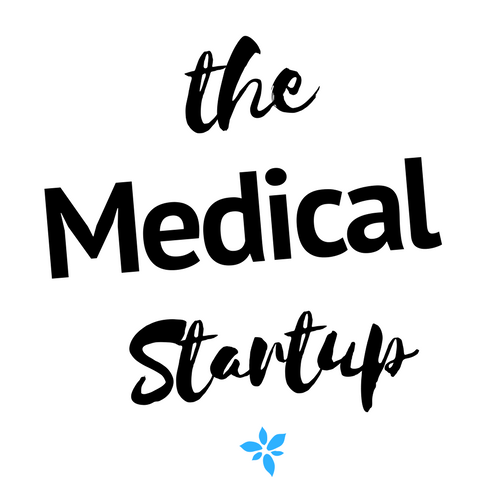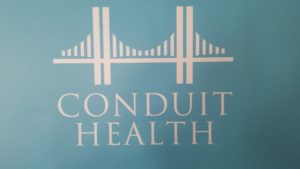Part 2: Interview with Dr Gregory Sam, Psychiatrist and Director of Conduit Health
First published April 28, 2016
We hope you enjoyed Part 1 of our interview with Dr Gregory Sam of Conduit Health. His telehealth psychiatry service provides nationwide consulting services which benefit rural and remote or mobility-affected communities. Consults can be done from the comfort of a patient’s local GP clinic or residential care facility, with no sign-up fee for GPs, and bulk-billing for patients.
Greg hopes to expand one day into other areas of the globe. Learn more about his journey below.
Dr Gregory Sam, Consultant Psychiatrist, Australia. Image courtesy of Dr Sam.
How did you go about funding your project?
I’m a big fan of lean startups. Not needing huge capital. Also a huge advocate of self funding. Conduit Health was completely self funded. I was confident I could make the business model work.
I didn’t seek outside funding. There are alot of strings that come with outside funding, and you’re suddenly answerable to the government or your VCs (venture capitalists) or your angel (investor), and I didn’t want to do that. So I self funded everything. The benefit of the lean startup was, it didn’t cost me anything. I set my budget and said, “this is what I have to work with, what can I do with it?”
I started my company in the garage at home and a small office– which used to be for boys’ nights! So I said, no more poker nights, and converted it into an office. Conduit started from there. No overheads, no rents or anything. Yes, it was a home, and my wife helped me with marketing, pictures- I remember days sitting in the back office packing thousands of letters to send to GPs nationally- just me and my wife. More and more, big successful companies have that kind of beginning, they don’t have the multimillion dollars to spend at the start.
Sometimes you have to be able to sacrifice the ego and go, I’m doing the secretarial work. I typed up letters for my psychiatrists. I needed to do all this for the company, and if I didn’t have the money to employ a secretary or typist, I’m doing it. It’s rewarding at the same time, you get to see the company growing. From one referral to multiple referrals a day.
You must be critical of what you do. I always think, is this the right thing to do? Reflect and analyse, ask, “in terms of the business strategy, is this a good idea?” Not being complacent, “oh I can spend all this money now,” it’s about growing your business. Some people create meaning without making money.
Often if a company has created meaning, they then create money. But often people focus on making money first.
What got you interested in entrepreneurship in general?
Wanting to make a change on a larger scale, to create something and grow it organically. And it’s exciting. Hard to describe the feeling but it’s a huge challenge. Something that can consume every moment of every day. But very rewarding.
What sort of doubts or worries did you come across?
I didn’t study business. The difficulty within the medical field is, there aren’t many entrepreneurial people. I keep thinking of so many examples where my medical colleagues have such great ideas but don’t have the support or environment to foster that development.
And I think taking myself out of that comfort zone,being with my business friends, listening and learning from them, really addressed those doubts.
One thing I know is that I’m a doctor, I know the medical part as well as the business side of things. Psychiatrists I work with feel comfortable with me because I know what it’s like to be a psychiatrist, I know the difficulties they face, I know what it’s like to treat patients. Whereas if it’s a purely business person, you wouldn’t know what to give the patient, or how to be a psychiatrist, you’d possibly be like “oh it’s good for business, let’s do it.” That’s my advantage.
I think a lot of doctors should see it as an advantage, “I’m in business but I have a medical background.” So my doctors and nursing staff, they all understand. Which is why I’m all for doctors getting into business. As a doctor you would be able to empathise, with a business heart.
The other fear was, I got into medicine to be a doctor, and do my clinical training and be a psychiatrist. The path is very set. Once you start thinking of deviating from that, it’s quite scary. The reality is, actually it’s very refreshing. Because all we’ve known for ages is patients, medicine, being a clinical doctor. So actually, its very liberating.
One of the problems when starting out with telehealth is the many barriers. Like technology, for example, Internet speed, willingness to try out technology, video technology, and costs.
I thought, what are all the barriers? One by one, I addressed them and ticked them off. We bulk bill, so patients don’t pay. GPs win because patients get seen by specialists for no sign-up fee. Patients win because they don’t have to travel. Psychiatrists win because they don’t have to have room fees, which can amount to $70-80K a year. It’s an untapped market. Lots of patients need help. Whereas the metropolitan market is completely saturated. So we’ve tried to knock down all these barriers, and create a win-win situation for everybody.
I think less so that people choose entrepreneurship, more so entrepreneurship chooses people. I think about ideas all the time. There are all sorts of naysayers who will come and tell you it’s not going to work. Why does this person say it won’t work, and how do I prove them wrong? I take what he says, think of the meaning behind what he says, and maybe he’s thinking it won’t work for xyz reason, how do I address xyz?
I think more and more power to doctors who become entrepreneurs in the medical field, or outside of medicine. So that studying medicine doesn’t become this one-track path, you will see patients and that’s it. People can become disillusioned by it, it’s so straight, the path doesn’t have any chance to vary. Yes, medicine does offer many specialties to choose from. But it’s still so contained like a nucleus, and no one’s thinking of addressing the outer shells.
Specialty training itself is all-encompassing. It will suck your life dry so that you just focus on training and that’s it. Same thing happened to me til I failed a few times, then you step back, and I said I don’t want my life to just be about training and fellowship. I want it to mean more, and that’s where the value is.
Did you have a mentor?
I had a few different mentors for different things. I try to draw upon the things that I want to gain.Positives and negatives. I draw analogies with badminton training. I had a coach for 6-12 months, and I drew as much as I could their positives. A certain coach would be good on physical stuff, another would be on mental aspects of the game. Same with psychiatry training. One would be clinically good so I’d take those aspects off them. Another had a good lifestyle setup, so I wanted to draw upon that.
For a business, it’s more offsite. I’m a member of business groups. The guy who did my websites runs an IT company in Malaysia, from a business perspective I love bouncing ideas off him, and learnt lots of things from him.
It’s important to be able to have many mentors for different things, because there’s a risk, if you follow just one person, you absorb all their flaws, and are unable to see their flaws. That’s a risk in medicine, too.
I also learnt heaps from watching talks by Guy Kawasaki and Elon Musk and a few others.
Part 3 will be released soon! In the meantime, if you’ve got any comments or questions about our article, comment below.
You can view Part 1 here and visit Conduit Health here.
If you wish to contact Greg for more enquiries about Conduit Health, or to sign up as a GP or psychiatrist for his service, please email enquiries@conduithealth.com.au. Conduit Health is also on Facebook.




